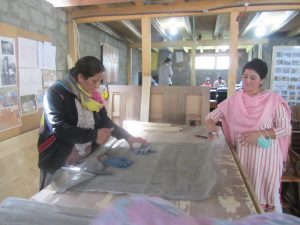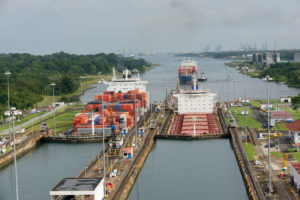As a parent of the UN Framework Convention on Climate Change (UNFCCC), UN Environment (UNEP) always watches anxiously as government negotiators bicker at the annual climate summits. And after all the hot air generated in the closed-door negotiation sessions, the results are rarely up to the mark.
Erik Solheim, UNEP Executive Secretary, put it diplomatically as the 2017 summit in Bonn, Germany, reached the oft-repeated deadlock phase. Referring to the 2015 Paris agreement, he said, “We still have a huge job to do. We’re now on three degrees.” That refers to the commitments made by national governments in the Paris agreement, which will lead the world an average three-degree Celsius temperature rise over the pre-Industrial Age level, though the agreement itself commits countries to keep temperature rise under two degrees Celsius.
Speaking to a group of journalists selected and sponsored by the Internews Earth Journalism Network – in partnership with the Stanley Foundation – to cover the Bonn summit, Solheim said he was not too worried about the deadlock in the negotiations. “I’m a lot more optimistic – what’s happening out there more important than climate talks.” He was referring to the myriad ways state and local governments, businesses and NGOs were trying to combat climate change.
Using India as an example, Solheim said, “That is a country showing 7% economic growth with 2.5% emissions growth.” He was debunking the old argument that economic growth and growth of greenhouse gas emissions go together. Solheim said India had decoupled this, “because (Prime Minister Narendra) Modi is so bullish on solar”, and spoke about Kochi airport, the first airport in the world to use only solar power.
In a year that US President Donald Trump took his government out of the Paris agreement, the UNEP chief preferred to speak of what other countries are doing. Talking about China, he said, “It is now taking action in a completely unprecedented manner. Look at their electric ferry, hydrogen metro, electric vehicles… At the core of this is that the price of renewable energy is coming down so fast – this was not the case three years back – if people tell us different they are not following the news.” That was an indirect way of taking on those opposed to action on climate change.
Pulling his mobile phone out of his pocket, Solheim said, “Economic shift can go very fast. When you look at this, how many of you remember that cellphones are only 10 years old? Just think of the number of things your phone can do now.”
The route
What do people need to do so that everyone takes climate change more seriously and start to act? “It is good to discuss (air) pollution,” Solheim answered, “because it is closer to people. It is more effective than talking about climate change, and tackling pollution helps tackle climate change. Pollution is the biggest killer in the world, but it can be tackled, as polio was. Delhi is being suffocated – this must stop. The UNEP summit next year will be on the theme of pollution.”
In 2018, UNEP will also run a global campaign to save coral reefs. The bleaching and subsequent death of corals is one of the most serious consequences of climate change, since coral reefs and mangroves are the two main nurseries of fish all over the world. As carbon dioxide concentration in the atmosphere increases due to human activities (mainly through thermal power plants, factory output, and transport), a lot of this gas is dissolved in seawater, turning the ocean more acidic. That is what is bleaching and killing corals, with the global temperature 1.04 degrees Celsius above the pre-Industrial Age level. Scientists expect far worse consequences with a warming of two degrees Celsius, not to mention what may happen at three degrees. Island nations – the worst affected – pushed to keep the warming ceiling within 1.5 degrees instead of two, but that has only been accepted as an aspirational goal.
Apart from controlling greenhouse gas emissions, how are such problems to be solved? The optimist in Solheim has a mantra: “The more an environmental problem can be turned into a business opportunity, the faster it will be solved.”
We want to hear from you! Tell us what you think about The Third Pole and you could win $100. Take our survey here.
![<p>Erik Solheim [image by: OECD/Michael Dean]</p>](https://dialogue.earth/content/uploads/2017/08/Erik-Solheim.jpg)








